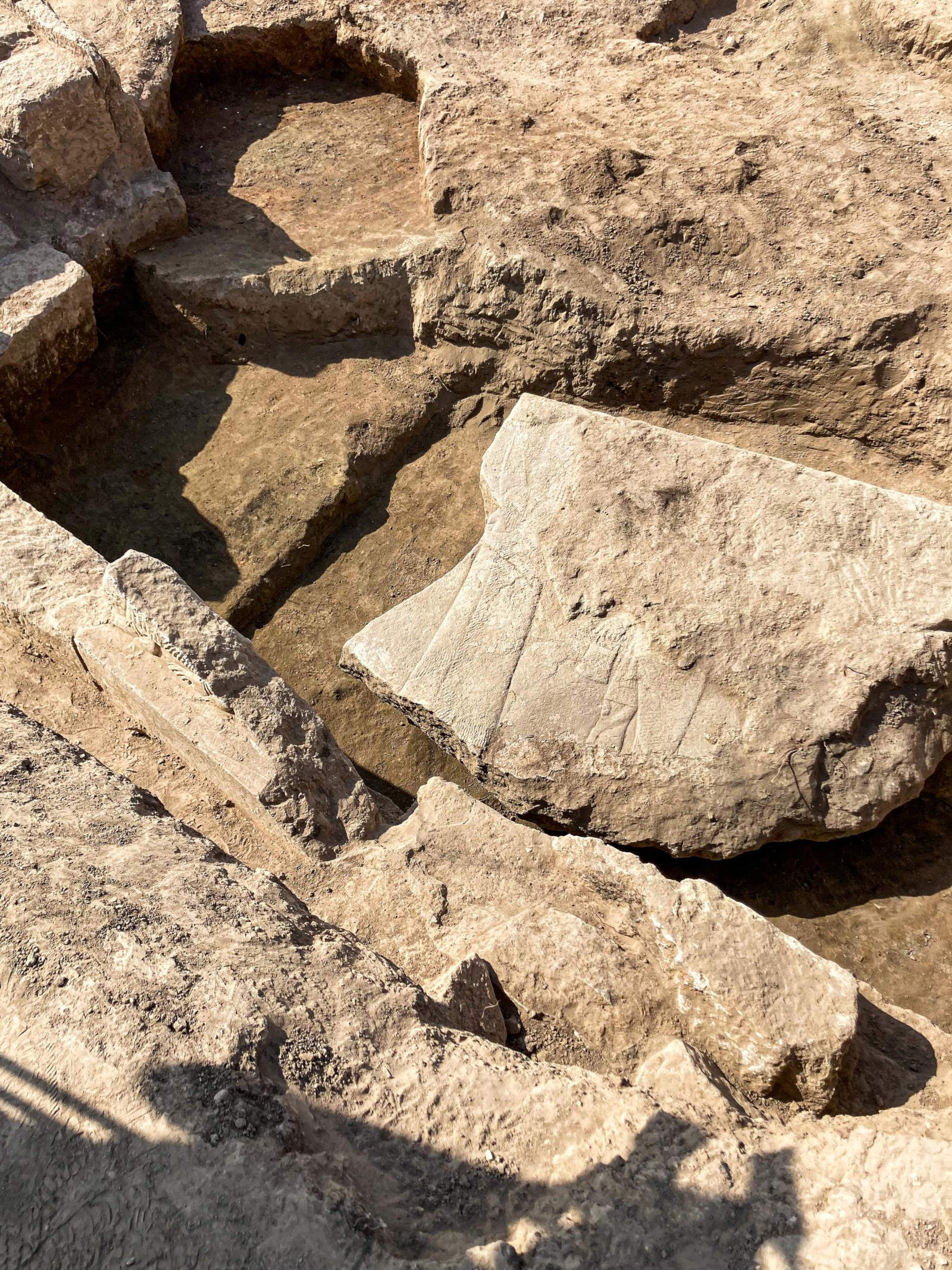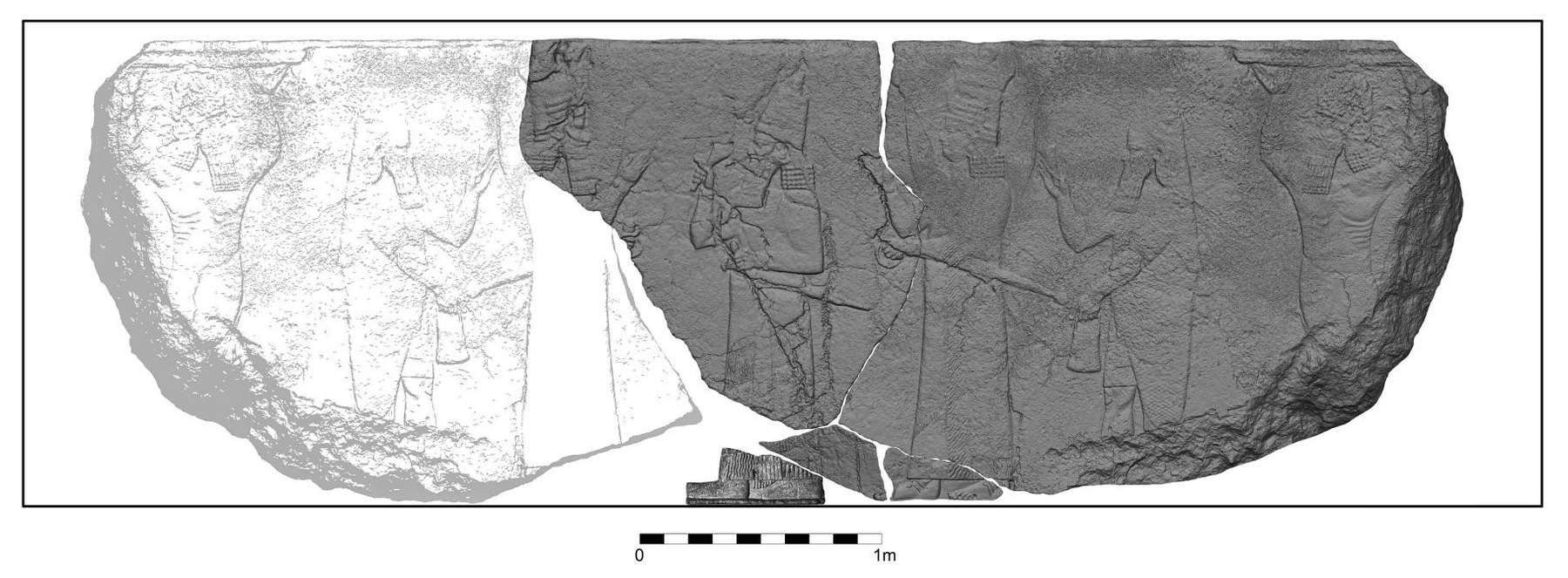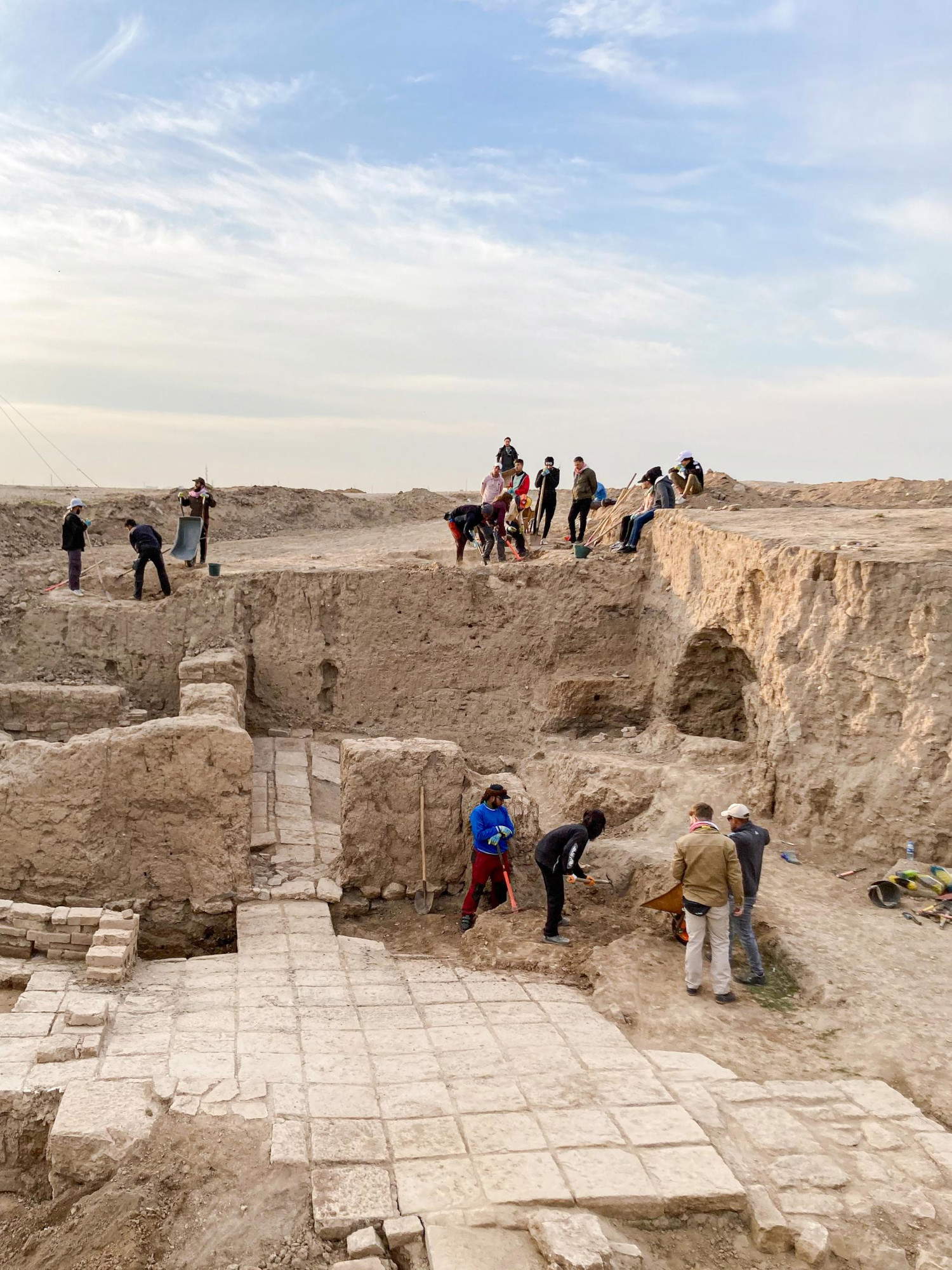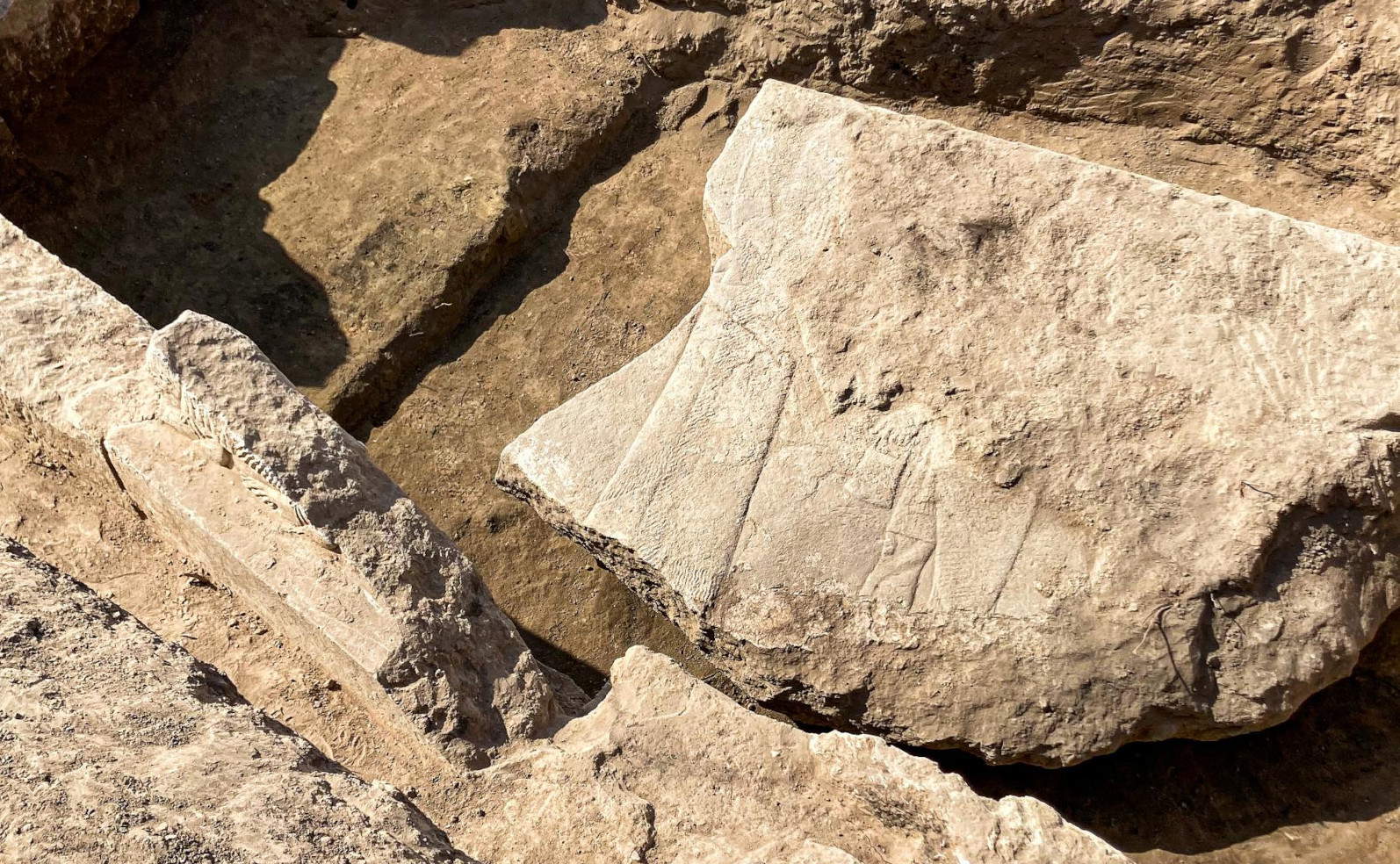A team of archaeologists from theUniversity of Heidelberg has unearthed an important find during an excavation campaign in Iraq: inside the throne room of King Ashurbanipal’s Northern Palace in the ancient city of Nineveh, large portions of a monumental relief depicting the 7th-century B.C.E. Assyrian ruler in the company of two deities, as well as other figures, have emerged.
The depiction was engraved on a massive stone slab 5.5 meters long, three meters high and weighing about 12 tons, and is striking to scholars not only because of its size but also because of its rich iconographic content. Nineveh, located nearpresent-day Mosul, Iraq, was a major metropolis in northern Mesopotamia. Under the reign of Sennacherib in the late 8th century BCE, the city became the capital of the Assyrian empire.
“Among the many relief images of Assyrian palaces known to us, there are no depictions of major deities,” said the head of the excavations in the Northern Palace, Dr. Aaron Schmitt of the Institute of Prehistory, Protohistory and Archaeology of the Ancient Near East.


Since 2022, the group led by Aaron Schmitt has been conducting archaeological investigations on the Kuyunjik mound in the central area of the North Palace, which was specifically desired by Assurbanipal. The excavations are part of the Heidelberg Nineveh Project, launched in 2018 under the leadership of Dr. Stefan Maul of the Department of Near Eastern Languages and Cultures at Heidelberg University. The first explorations of the North Palace date back to the late 19th century, when British archaeologists discovered large reliefs, now housed in the British Museum in London.
In the center of the newly discovered relief resurfaces the figure of Ashurbanipal, considered the last great king of the Assyrian empire. Carved alongside the ruler are two of the main deities of the Mesopotamian pantheon: the god Assur and the goddess Ishtar, the latter the protector of Nineveh. Behind them, a mythological being, a fish genie, bestows salvation and life on the king and the deities. Closing the scene is a figure with raised arms, which, according to reconstructions, may represent a man-scorpion. “These figures suggest that a huge winged sun disk was originally mounted above the bas-relief,” Aaron Schmitt explained. In the coming months, based on data collected on site, researchers will examine the depiction and context of the find in detail and publish the results in a scientific journal.
As Prof. Schmitt explained, the relief was probably originally located in a niche in front of the main entrance to the throne room, the most significant point in the entire building. The fragments were found in an earth-filled pit located just behind this niche, probably excavated during the Hellenistic period, between the 3rd and 2nd centuries BCE.
“The fact that these fragments were buried is surely one of the reasons why British archaeologists never found them more than a hundred years ago,” Prof. Schmitt speculated. As agreed with theIraqi State Board of Antiquities and Heritage (SBAH), the medium-term plan is to place the relief at its original site and open it to the public.

 |
| Iraq, monumental relief discovered with last great Assyrian king and gods in ancient city of Nineveh |
Warning: the translation into English of the original Italian article was created using automatic tools. We undertake to review all articles, but we do not guarantee the total absence of inaccuracies in the translation due to the program. You can find the original by clicking on the ITA button. If you find any mistake,please contact us.